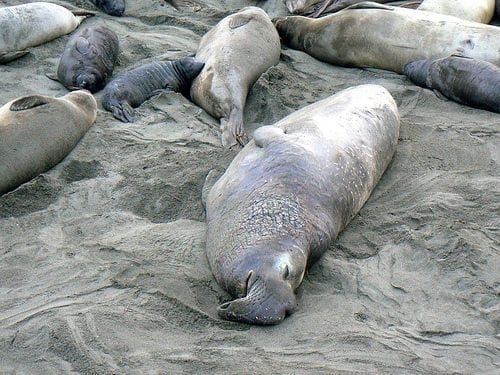When the elephant awakens…
Between 1980 and 2005 the population of Australia has increased 50%. What has happened to the medical workforce during this time?
According to Chong et al (2010), this is what has happened:
- the number of medical school graduates per year has barely increased from 1278 to 1348
- the average working hours of doctors has decreased
- there are less general practitioners (GPs) per person
(98, rather than 104 effective full-time GPs per 100,000 people) - reliance on overseas trained doctors (including most of the contributors to Life in the Fast Lane) has grown to 25% of practicing doctors
(more like 1 in 3 in Western Australia)
In response to this shortage of home-grown doctors, the Australian Federal Government has cranked up the undergraduate medical education production line. Between 2007 and 2012 the number of new medical graduates is to increase by 90%, to 2920 per year.
This explosion of new graduates begs the question – who is going to teach them?

Ask a practicing doctor, ‘who taught you to be a doctor?’
Was it the old fogie (sorry, Profs…) standing up at the front of the lecture hall?
Or was it the clinicians he or she worked alongside during their student attachments and in their intern years?
Or did they teach themselves from repeated clinical exposure, reading about cases, observing others and trial-and-error?
I suspect the first option plays the lesser part in the true education of a doctor.
The ED rotation is compulsory for interns in Australia. It allows junior doctors to develop skills in assessing and managing undifferentiated patients, learning procedures and learning about the management of truly sick patients. This experience cannot be easily replicated by other means. Junior doctors are not the workhorses of the ED – indeed, according to Chong et al (2010), ED efficiency tends to improve in their absence – they are primarily there to learn. Yet, someone has to supervise and teach this influx of new doctors as they learn their craft. Presently, in Australia, it appears that the burden of teaching primarily falls on the ED registrars. Unfortunately, registrars tend to receive little or no training in how to teach and are themselves still learning. Such deficiencies in the training of junior doctors risk further exposure as the surge in new graduates continues to stretch our educational resources.
Chong et al (2010) flesh out many of the complex issues involved. Can the crisis be offset by increasing protected teaching time? What about improved recognition of the role of clinicians in teaching and the assignment of education roles (such as the ‘education registrar’) within the department? What will be the future roles of GPs and international medical graduates in the ED workforce? How will the teaching of junior doctors be affected by the chronic shortage of ED nurses? What affect will the surge in interns have on that scourge of modern day emergency medicine known as ‘access block’? What about the possible rise of emergency nurse practitioners – would clinical exposure for interns decrease, with the advantage of increased teaching time? Currently, the demand for emergency physicians is outstripping the annual supply — will there be enough FACEMs to go around? Perhaps more importantly, with more doctors crammed into the department, will there even be enough telephones, desks and computers for everyone?
Time will tell as the elephant (seal) awakens…

References
- Brazil V. Interns in the ED: The real challenges of increasing numbers. Emergency Medicine Australasia, 22 (2), 97-99
- Chong A, Weiland T, Mackinlay C, Jelinek G. The capacity of Australian ED to absorb the projected increase in intern numbers. Emergency Medicine Australasia, 2000; 22 (2): 100-107
- Weiland T, Mackinlay C, Jelinek G. The Emergency Medicine Capacity Assessment Study: Anticipated impact of a major increase in intern numbers in Australian ED. Emergency Medicine Australasia, 2010; 22 (2): 136-144
- Wiesbauer F. Teaching Masterclass: The Psychology of Learning. Medmastery
Chris is an Intensivist and ECMO specialist at The Alfred ICU, where he is Deputy Director (Education). He is a Clinical Adjunct Associate Professor at Monash University, the Lead for the Clinician Educator Incubator programme, and a CICM First Part Examiner.
He is an internationally recognised Clinician Educator with a passion for helping clinicians learn and for improving the clinical performance of individuals and collectives. He was one of the founders of the FOAM movement (Free Open-Access Medical education) has been recognised for his contributions to education with awards from ANZICS, ANZAHPE, and ACEM.
His one great achievement is being the father of three amazing children.
On Bluesky, he is @precordialthump.bsky.social and on the site that Elon has screwed up, he is @precordialthump.
| INTENSIVE | RAGE | Resuscitology | SMACC
